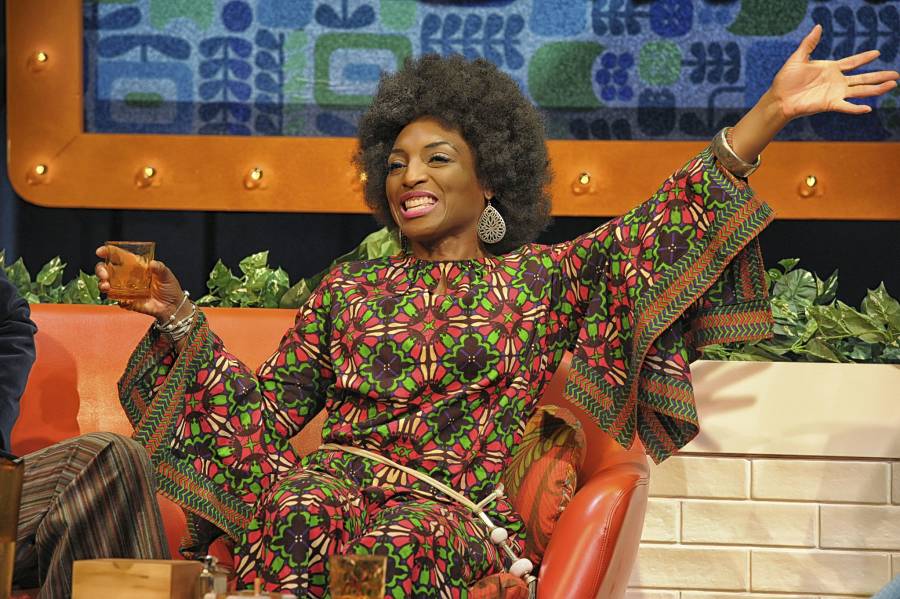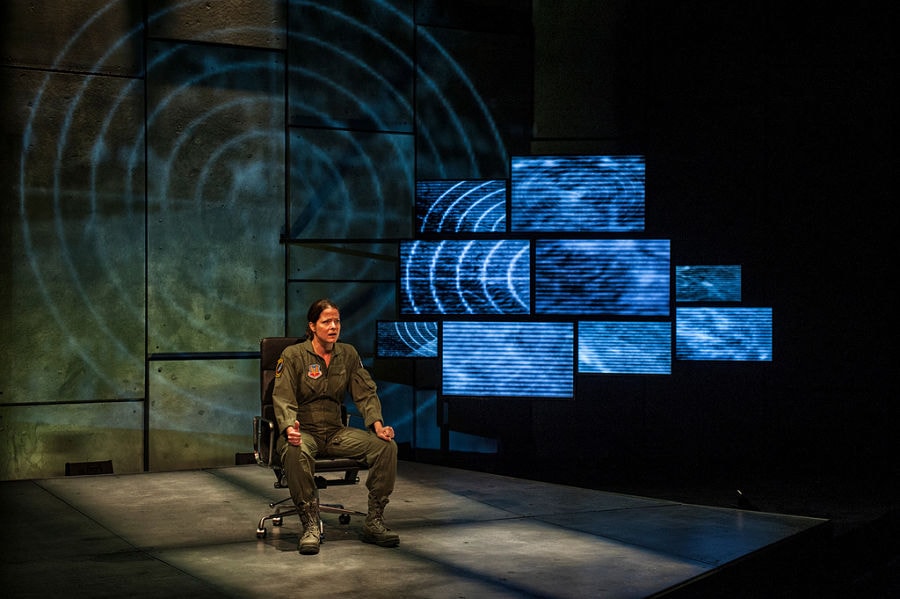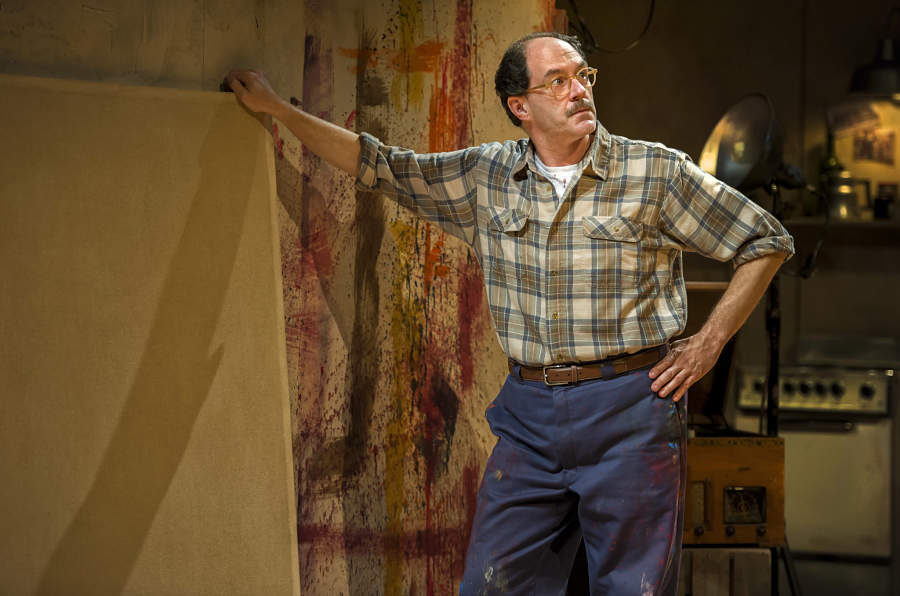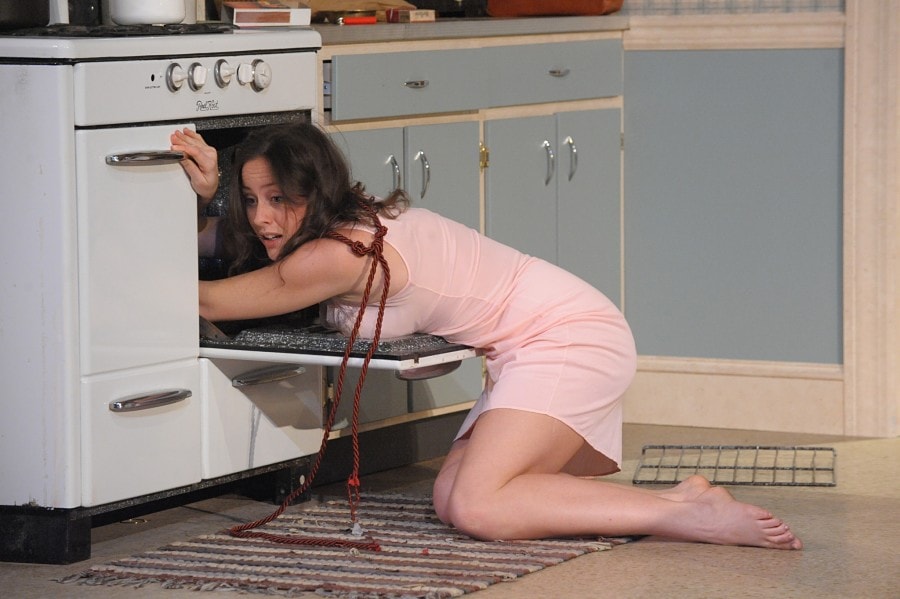BALTIMORE: It started in a former bowling alley in Charm City’s artsy Station North neighborhood, and two years ago made the move to a former vaudeville theatre on the West Side, close to the Inner Harbor, as part of a newly designated Bromo Tower Arts and Entertainment district. Everyman Theatre may have sprung from modest, homegrown roots, but it’s blossomed into a major player in the city’s theatre scene while retaining its intimate aesthetic. We talked to artistic director Vincent Lancisi about the theatre’s origins, its growth, and its commitment to local talent.

Who founded Everyman, when, and why?
I began Everyman Theatre in 1990, right out of grad school. I had studied directing at Catholic University in Washington, D.C., and knew what I really wanted to do was to create a theatre company where the actor is at the center. It had to be a resident company and the theatre had to be focused on high quality and affordability so it could grow a large, loyal following who could come to see all the shows in a season. When I asked a trusted colleague where I should go to start such a company, he pointed me just up the road to Baltimore.
Baltimore is such a dynamic city. At the time, there was a unique theatre scene with a niche that needed to be filled. Baltimore had a major regional theatre in Center Stage. It had two Broadway touring houses in The Mechanic and Lyric. Being a city of neighborhoods, each one developed a community theatre of its own. There were over a dozen community theatres, some playing to 80 or even 90 percent capacity. The one thing that was missing was small professional theatres. There were none. So I incorporated in Baltimore six months before I graduated and moved the day after graduation to begin the Everyman Theatre journey.
What sets your theatre apart from others in your region?
One of the most distinguishing factors for us is our resident company. It was very popular up until the early ’80s to have a company of actors featured at a particular theatre. You would get to know the actors and see them in different roles. I was weaned as the young theatregoer at Trinity Rep in Providence and later at Arena Stage while their resident company was in full swing producing some of the most exciting theatre in the country. I saw how these families of actors added layers of subtext and depth to their performances by having a deep knowledge of each other and a shared aesthetic in performance. I took my lead from companies such as these.
I worry deeply about the plight of the American stage actor. They spend so much of their time seeking out the next gig that they can’t properly prepare for their current one, if they’re lucky enough to have one. It’s near impossible to make a living acting onstage unless the actor is famous or in a long-running show. Most actors I know simply want to work and have careers. They’d like to have some say in their artistic future and in the creative process of producing plays. They’d like to be able to work and live in a community like any other professional, purchasing homes and raising families and being good citizens while having a career in the theatre. I really don’t think that’s too much to ask. We must invest in actors in our theatres and make them central to our missions.

So I set out to create a group of professional actors and designers who could see Everyman as their artistic home. They didn’t have to go off to New York or L.A. to make a living practicing their craft; they could stay right here in the Baltimore/D.C. area, and they could consistently have work throughout the season at Everyman. One of my favorite things as artistic director is seeing an actor play the leading man in one show, and then in the very next production they are playing the comic supporting role, and then the next time you see him he’s just in a bit cameo role. Our audiences love seeing how our actors can transform from one role to the next.
Who is your audience?
We have a fiercely loyal subscriber base of 5,000 individuals. Many of them have a steady diet of theatregoing in their history. They are smart, travel, and see plays in theatres large and small, locally and regionally, as often as they can. Many joined us when we were a small storefront theatre space and transferred with us to our new home, which we opened in the winter of 2013. Our new space is larger and custom-designed for Everyman. It is carved out of an old vaudeville theatre called the Empire, which opened in 1911 with 1,700 seats. We gutted the building and inserted intimate spaces, which suits the taste of our audiences and is perfect for our performance aesthetic. It seats 250 audience members. Something we always heard from our audience was that they loved the intimacy of our previous space (which seated 170) and we wanted to preserve that experience for them.
What I love about our audience—particularly our longtime subscribers—is that they aren’t afraid to talk to me. They tell me what they liked in a season and what they didn’t! They’re every bit as much a part of our organization as our resident company and our staff. They are the theatre equivalent of “the 12th man.”
Tell us about your favorite theatre institution other than your own, and why you admire it.
There are so many incredible theatres throughout the country (and the world), it’s hard to pick just one. I very much admire the work of Steppenwolf in Chicago. I visited recently and had a chance to stop by to see a production and chat with Martha Lavey and an old friend, Tom Pearl, who is their production manager. I admire their company model and the daring work they put on stage. I’m still a big fan of Trinity Rep, as well. Outside of theatres with ensembles, I always enjoy going to Playwrights Horizons to see what the new voices in our field are saying, and I’m curious about the young theatremakers who are setting the stage for the future of regional theatre in America.

How do you pick the plays you put on your stage?
Very carefully! You know, it’s the most challenging and frustrating part my job—and also the most important part. Curating a season should be the favorite part of any artistic director’s job, yet every artistic director I know dreads it. If you said to me, “Pick your favorite six plays right now and there’s your season,” that would be a joy. But we all know that’s not what happens at all. I start with a list of 40 or 50 plays in the fall. This list usually swells before it narrows. By the time you filter out production costs, mixtures of tone, a variety of theatrical periods represented, good representation of women and actors/writers of color, budgetary factors, rights availability, and the toll on the production team to execute these six plays, anyone would be fraught. Add to that the most important part for me—feeding my resident company and audience with roles that show the strengths of my actors and their versatility—and you have a daunting task of season selection indeed! It’s a huge puzzle and the odds are against you of all the stars aligning. But when they do, it’s magic.
What’s your annual budget, and how many artists do you employ each season?
We have an annual budget of $3.2 million. We employ more than 120 individuals per season, 79 of which I would characterize as “artists.”
What show are you working on now? Anything else in your season that you’re especially looking forward to?
I’m knee-deep in rehearsal for Ira Levin’s comedy thriller Deathtrap. It’s our holiday play! Some people want The Nutcracker; we’re giving them Deathtrap! This is such a fun show. People are going to scream and jump out of their seats and then laugh hysterically. Thrillers are so rarely done onstage anymore, so I think this is a great throwback. I’m also directing the season closer, Blithe Spirit, which will be a stylish and fun way to end the season. I love that we offer our patrons crowd pleasers like these and combine them with more meaty plays like Ibsen’s Ghosts, George Brant’s Grounded and Lynn Nottage’s Ruined. A balanced diet.
Strangest or funniest thing you’ve ever seen (or put) on your stage?
One of the strangest and funniest things I’ve ever seen on our stage was in the rehearsal process for God of Carnage back in 2013. Watching our props and special-effects team try to figure out the whole vomit set-up was hysterical. Sometimes it would produce too much vomit and would end up creating a “splash zone” in the front rows. We didn’t want that, of course! It took many, many tries to figure out how to make all of that work in a comic way without collateral damage.
What are you doing when you’re not doing theatre?
Cooking! I love to cook. I grew up in a home and culture where food is love. I love good food and a spectacular bottle of wine. What I love most is sharing it with friends and family. I consider myself a “foodie.” It’s no secret that when I’m not here, I’m likely creating some special meal at home or discovering the next creative restaurant somewhere in the city.

What does theatre—not just your theatre, but the American or world theatre—look like in, say, 20 years?
I hope that we see audiences continue to grow over the next 20 years. Theatre has to remain vital. I believe theatre offers an even more important role today than it ever has before. In the age of technology and the Internet, everyone is plugged in and human interaction is limited in our work and home lives. I find new audience members cherish the human interaction they find in the theatre. It’s one of the few places where audience members have to come to the same place, at the same time, and bear witness to the event in front of them. They must unplug and experience a story together. It’s compelling, it’s unique, and it can’t be DVR’d and witnessed on your own time, in your own home. It’s like church…only fun!


